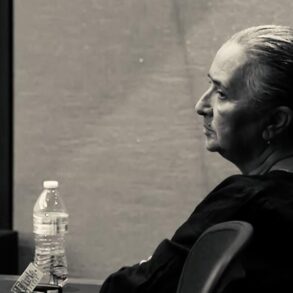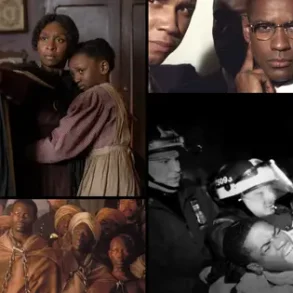
Homelessness in the U.S. is a public health crisis. In 2022, more than 582,000 Americans became unhoused, a number that has risen every year since 2017.
However, not all Americans are equally likely to experience homelessness. Black Californians are nearly four times more likely than White residents, echoing troubling trends seen across the country.
These findings confirm that Black households are disproportionately vulnerable to displacement that can then turn into homelessness. To understand why, we must look at the impact of structural, institutional and interpersonal racism on housing, the criminal legal system and education.
Housing’s Jim Crow roots
American cities embody explicit racist covenants between government policies, banks and the real estate industry.
Discriminatory, race-based residential segregation, or redlining, owes its roots to Jim Crow-era ideologies that purposefully and radically redrew American cities. Over a century ago, Black families were relatively well integrated throughout city neighborhoods until the Great Migration brought labor-seeking Black migrants north, sowing panic and hostility in predominantly White communities. Some reacted through violence, while others promoted the creation of Black enclaves, which resulted in segregation practices that were codified through redlining in the 1930s.
In many metropolitan areas including Chicago, San Francisco and Cleveland, neighborhood segregation today follows that same perimeter: White households are concentrated in wealthy suburbs, while Black households are located in economically disadvantaged urban neighborhoods. Even as some of those dividing lines erode, the result isn’t racial integration but the displacement of Black households out of cities or into homelessness.
Homeownership is simultaneously a means of building wealth for White families and a cause of poverty for generations of Black families. The racial wealth gap is wide and predicted to continue expanding. In 2019, White families held an average of $184,000 in wealth while Black families held $23,000. Most White households own their homes compared with less than half of Black households. Such financial resources help to soften the blows of unexpected life events and can help family members whose changing economic circumstances affect their housing. Absent those resources could result in being left without a home in the face of a financial emergency.
Today, Black households are still steered into segregated Black neighborhoods, offered higher interest rates and subprime mortgages, and denied loans 1.8 times more often than White families. Black renters — particularly Black women renters — are much more likely to be evicted or threatened with eviction. Those court-mandated evictions then appear on tenant screening reports, which landlords can use to justify denying housing.
The prison-to-homelessness pipeline
One key to anti-Black racism can be conveyed in a single phrase: Same action, different treatment.
Consider the different treatment Black and White people receive from police and the over-policing of Black communities that result in high rates of incarceration. These are not linked to crime rates but to changes in public policy at the federal, state and local levels that promoted more policing, more arrests for minor drug offenses and harsher, longer prison sentences in communities of color.
A well-documented prison-to-homelessness pipeline also disproportionately affects Black Americans. Like eviction, a history of incarceration is a legal reason to deny someone housing and can limit access to public housing. Compounding this injustice, people released from prisons receive very little help finding housing.
The stigma of a criminal record can also be a major barrier to employment, disproportionately impacting Black job applicants. In one landmark study, White job applicants with a criminal record were more likely to be invited to interview than Black job applicants — with or without a criminal record. Incarceration also affects a household’s economic security, with hidden costs that the family must absorb such as court debt and commissary support.
In other words, a criminal record impacts employment opportunities, which impacts the amount of rent someone can afford from what often ends up being lower wages. Without a good job, you can’t afford a good home. And without a home, everything else falls apart.
Starting off on an unequal foundation
The framework for our modern public education system also follows the logic of Jim Crow, particularly as American schools today resegregate, especially in the American South. Because schools get funding through state and local property taxes, predominantly Black schools situated in underserved communities are chronically underfunded and under-resourced.
Education powerfully determines one’s life course, lifetime earning potential, economic security and quality of housing. The federal minimum wage is $7.50 an hour, or about $15,000 a year, while the average cost of a one-bedroom apartment was $1,769 per month in 2022, doubling and tripling in more expensive metropolitan areas. The arithmetic is obvious: most full-time, minimum wage workers cannot afford rent.
Like the racial wealth gap, the earnings gap is large and persistent. In 2022, Black full-time workers earned $881 a week on average, compared to $1,101 per week for White workers. Black households are more likely to be rent-burdened (paying more than 30% of their income to rent) and severely rent-burdened (paying more than 50% of their income to rent), leaving Black families more likely than White families to make trade-offs between essential daily needs like housing, utilities and food.
Thousands of White Americans experience hardships that push them into homelessness, too — but not because of the color of their skin. While the ultimate reasons that lead to someone becoming unhoused across race are similar — deep poverty, trauma, limited family wealth in the face of unexpected blows, a critical shortage of affordable housing — the addition of anti-Black racism means that Black families fall into homelessness more often because they don’t have the protections that whiteness brings.
Structural, institutional and interpersonal racism in our housing, criminal justice and education systems mean that Black Americans disproportionately struggle to find consistent housing, are vulnerable to displacement into homelessness and face more barriers when trying to get rehoused.
If we are serious about ending homelessness, we must tackle the racist systems that inform and sustain public structures and inadvertently displace Black families.
Kara Young Ponder, Ph.D., is the director of community engagement and racial justice at the University of California San Francisco Benioff Homelessness and Housing Initiative and a Public Voices Fellow of the OpEd Project.
This post was originally published on this site be sure to check out more of their content.






